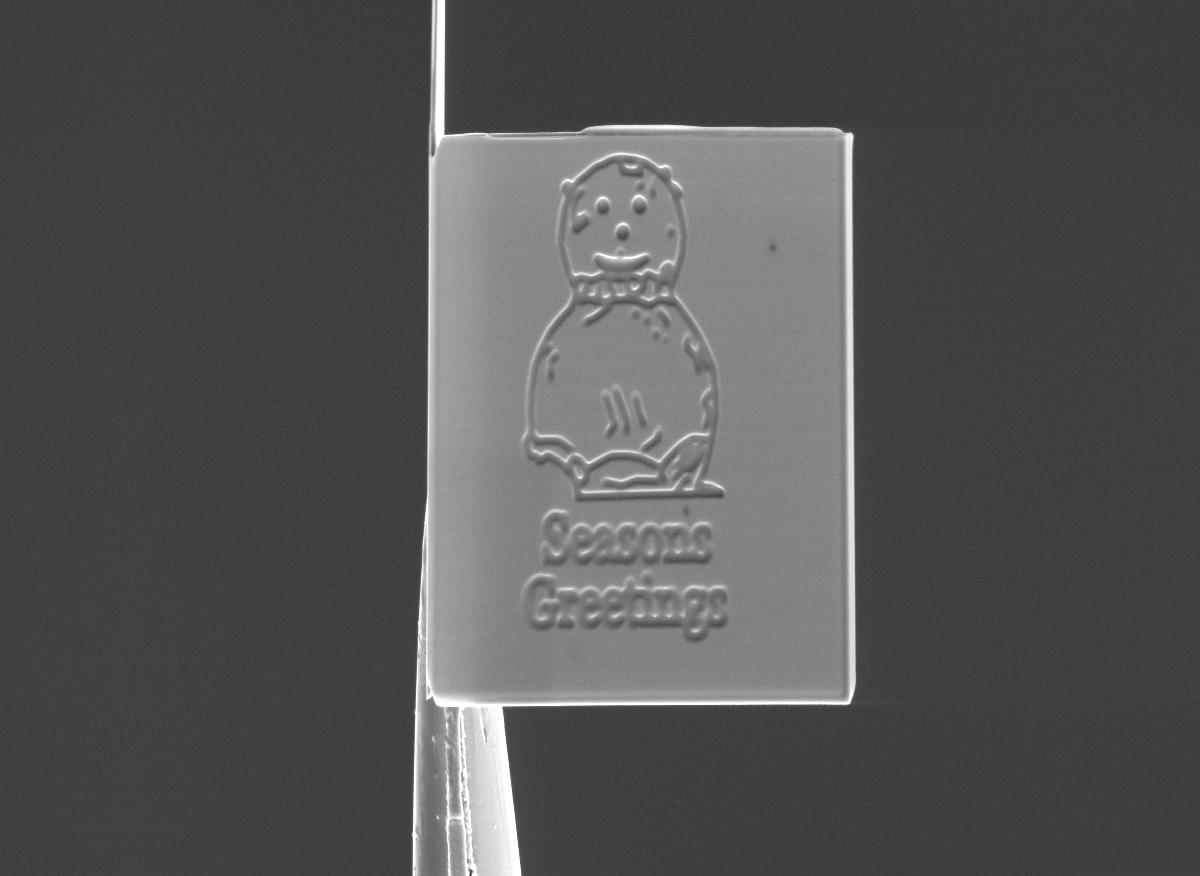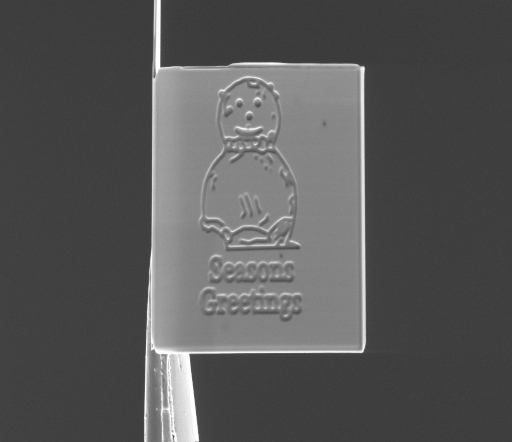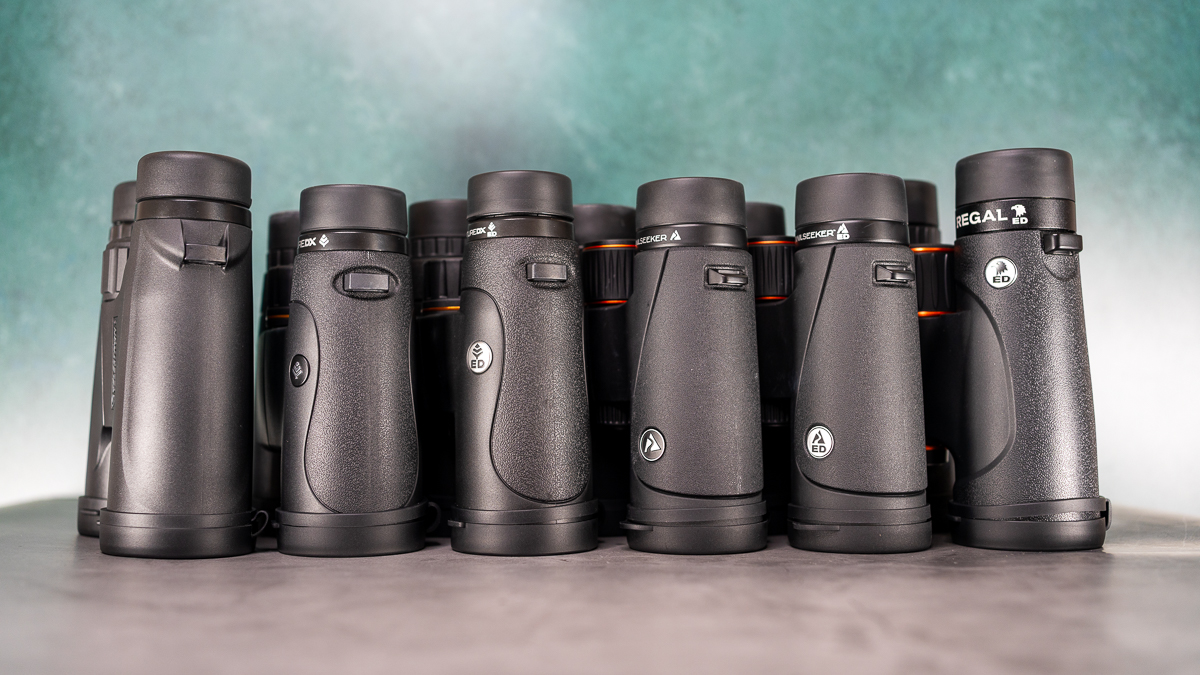World's Smallest Christmas Card Offers Season's Tiniest Greetings

In a very, very, very small gesture of holiday goodwill, the U.K.'s National Physical Laboratory (NPL) has crafted the smallest Christmas card in the world, which is so tiny that it must be measured in microns — millionths of a meter.
The card is a mere 15 microns (0.015 millimeters) wide by 20 microns (0.02 mm) tall; to put that into perspective, a human hair is about 50 to 80 microns (0.05 to 0.08 mm) wide. It would take about 200 million of these minuscule "cards" to cover the surface of a single postage stamp, NPL representatives said in a statement.
On the tiny card's cover is a jolly-looking snowman and the message "Season's Greetings," but you wouldn't be able to read it without the help of a microscope. Inside the card is a second inscription of the holiday message, alongside "From NPL." This whimsical holiday creation showcases the work conducted at the lab with materials at the micron scale, to test their performance, determine new applications and improve miniaturization methods for tools and machines used in electronics, computers and medicine, according to the statement. [What Is the Smallest Thing in the Universe?]
Researchers crafted the card from a membrane of silicon nitride at a thickness of about 200 nanometers (0.0002 mm), coated with a 10-nanometer (0.00001 mm) layer of platinum. To carve the design and message on the card, the team used a focused ion beam, directing a fast-moving stream of charged particles toward the card's surface.
A previous record holder for the world's smallest seasonal greeting was presented by NPL in 2009, when the organization debuted a "nanosnowman" made from tin beads that are used to calibrate lenses in electron microscopes. It measured 10 microns (0.01 mm) wide. The tiny holiday sculpture was assembled using a system for manipulating particles on the nanometer scale, NPL explained in a statement. Then, a focused ion beam carved the snowman's eyes and smile, and the structure was welded together with platinum, NPL reported.
Over the past decade, scientists and engineers have investigated numerous methods for designing complex contraptions or objects that seem impossibly small, producing an inchworm-like microbot that measures 250 microns (0.25 mm) long; the world's smallest hot-rod, or "nanodragster," that is 50,000 times smaller than a human hair; and light-activated molecular "scissors" that measure 3 nanometers in length.
And in 2016, three scientists shared the Nobel Prize in Chemistry for their work creating the world's smallest "machines," linking molecules together to form devices with moving parts that perform very tiny tasks.
Get the world’s most fascinating discoveries delivered straight to your inbox.
The NPL's diminutive Christmas card is "a fun way to mark the festive season," but it also serves to spotlight the developing technologies that enable engineers to conduct delicate work with materials at such a small scale, David Cox, one of the creators of the card and an NPL research fellow, said in a statement.
"We are using the tools that created the card to accurately measure the thickness of extremely small features in materials, helping to unlock new battery and semiconductor technologies," Cox said.
"It's a genuinely exciting development that could help to make new technologies and techniques a reality," he said.
Original article on Live Science.

Mindy Weisberger is a science journalist and author of "Rise of the Zombie Bugs: The Surprising Science of Parasitic Mind-Control" (Hopkins Press). She formerly edited for Scholastic and was a channel editor and senior writer for Live Science. She has reported on general science, covering climate change, paleontology, biology and space. Mindy studied film at Columbia University; prior to LS, she produced, wrote and directed media for the American Museum of Natural History in NYC. Her videos about dinosaurs, astrophysics, biodiversity and evolution appear in museums and science centers worldwide, earning awards such as the CINE Golden Eagle and the Communicator Award of Excellence. Her writing has also appeared in Scientific American, The Washington Post, How It Works Magazine and CNN.



